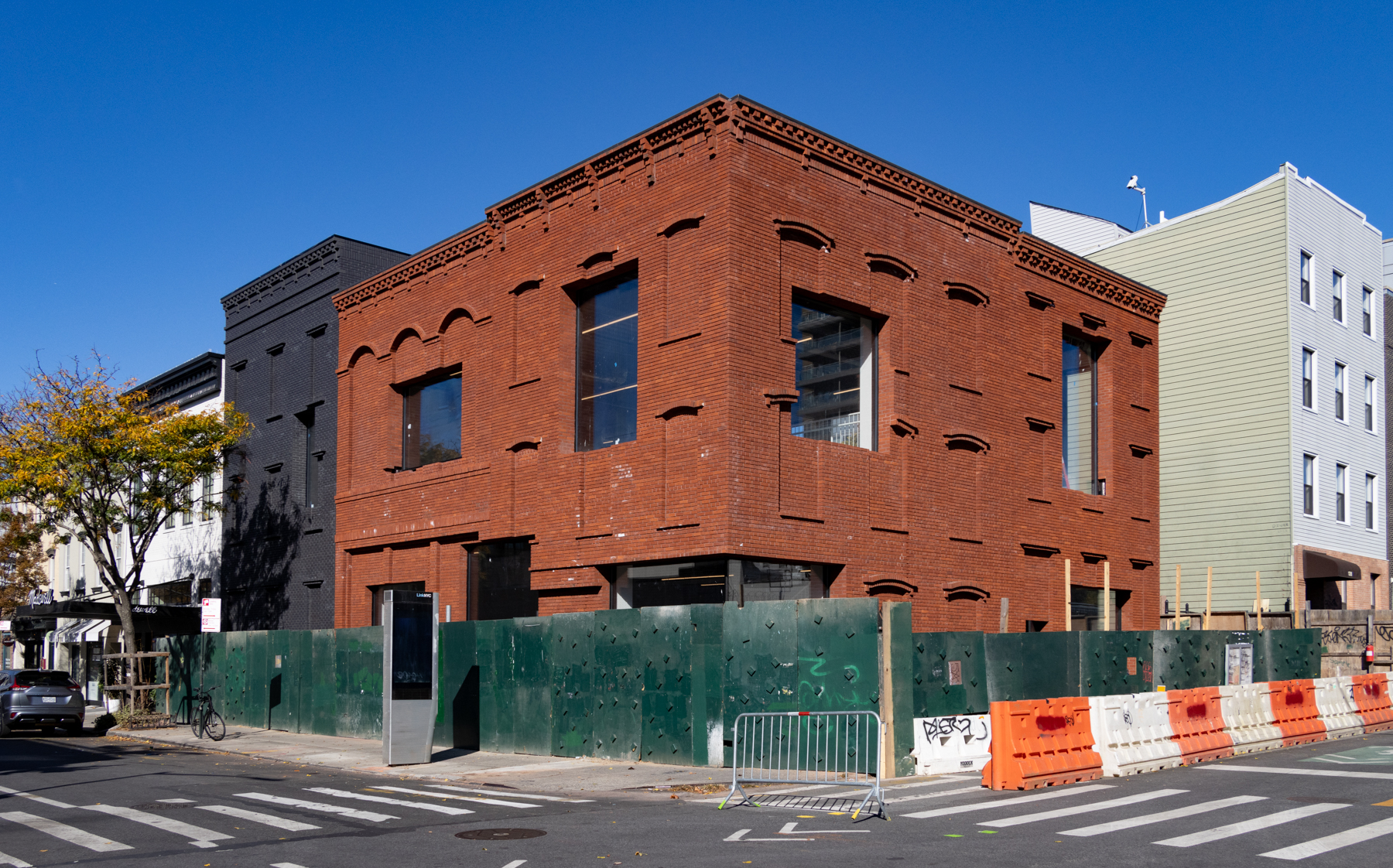Bells on My Fingers
Named for an 18th century family who owned property in eastern Queens and not the credited inventor of the telephone, Bell Boulevard has developed over 150 years from a dirt trace to harboring some of eastern Queens’ more entertaining samples of eclectic architecture. From the NYC Landmarks Designation Report: “Until the last decades of the…

Named for an 18th century family who owned property in eastern Queens and not the credited inventor of the telephone, Bell Boulevard has developed over 150 years from a dirt trace to harboring some of eastern Queens’ more entertaining samples of eclectic architecture.
From the NYC Landmarks Designation Report:
“Until the last decades of the nineteenth century, Bayside was primarily farmland. The property on which the house stands was acquired by Abraham Bell in 1824. A shipping and commission merchant operating in lower Manhattan, his firm, Abraham Bell and Company was involved in the cotton trade and in transporting immigrants from Ireland during the potato famine of the 1840s.
“His son, Abraham Bell 2nd, became head of the firm around 1835 and the company changed its name to Abraham Bell and Son in 1844. The Bells had homes in several locations: Bayside, Yonkers (where Bell Brothers operated a money-lending business) and in Narragansett Pier, Rhode Island.
“The Bell property covered approximately 246 acres and extended from near the site of the current Bayside station of the Long Island Railroad at 41st Avenue to Crocheron Avenue (35th Avenue) and from Little Neck Bay to 204th Street. An unpaved lane, known as Bell Avenue (now Bell Boulevard) bisected the farm.The east section, closer to Little Neck Bay, was called the lower farm, and the west section, the upper farm. Near the center of the property, along Bell Avenue, the Bells built a house in 1842. It is likely that it was occupied by Thomas C. Bell and Eliza (Jackson) Bell, who married in 1840. The house was demolished in 1971.”

A former Masonic temple, now Elim Presbyterian Church, stands at Bell Boulevard and 36th Avenue. It’s a stolid brick mansion with a monumental entrance portico supported by Corinthian columns and sunrise-figured arched windows. A bit of the 21st century has encroached: cellphone towers on the roof.

On the NW corner of 36th and Bell Boulevard is a three-story house, porched on three sides with a bay outcropping on the 36th Avenue side, with inlaid rocks and stones, giving it a ‘cobblestoned’ appearance. It was built between 1905-1906 is a designated New York City Landmark. It’s not the only “cobblestone” house in New York City — the Elmhurst Baptist Church may be even more impressive — but this one has the landmarks designation.
Here’s the Landmarks Designation report, which is quite thorough, detailing the house’s history as well as that of Bayside and the Rickert-Finlay development company.

Around the same time the ‘cobblestone house’ was built the Rickert Finley Company was busy constructing a development along Bell Boulevard (then called Bell Avenue) called Bellcourt, and, as was done with many such developments, built delineating gateposts at cross streets:
From the LPC: “Along the west side of Bell Avenue, the development’s eastern boundary, pairs of rustic stone pillars were erected by Rickert-Finlay at the intersection of Crocheron (35th), Lamartine (36th), Warburton (38th), Ashburton (39th) and Griffen (41st) Avenues. Approximately seven feet tall, these large signposts had granite bases and inset panels to identify the streets. Only the pair flanking 36th Avenue survives and the north pillar is located on the southeast corner of the landmark site.”
From the looks of things it appears that both the cobblestone house and the gatepost adjoining it have been nicely repointed in recent years. Though the newer apartment house on the SW corner of Bell Boulevard and 36th has retained a gatepost, it has darkened over the years from car exhaust and other pollutants. Both posts still feature the streets’ old names, Bell and Lamartine Avenues.


Photo from cinematreasures.org
A pair of Bell Boulevard institutions had their beginnings in the 1920s and 1930s. Bayside Theatre, on the NE corner of Bell and 39th Avenue, started out in the 1920s as Irving Lesser’s Capitol Theatre. The Spanish Colonial-style building is still there, with both the 1st and 2nd floors used for retail stores and offices. The theatre was converted to a quad in the 1970s and closed in the late 1990s. I saw Jurassic Park (the first one) at the Bayside in 1992.


Photo from Facebook, Long Island and NYC Places that Are No More
There’s been a White Castle on the NW corner of Bell Boulevard and Northern Boulevard since 1932, when the small building you see in the older picture opened. The latest in a succession of White Castle restaurants on the site went up in 1987 and is the one you see there today.
The chain originated in 1921 in Wichita, Kansas by cook Walter Anderson and insurance agent Billy Ingram. It was decided to feature white in the color scheme to promote cleanliness, as ground beef was, at the time, unpopular in the wake of Upton Sinclair’s The Jungle, which described unsanitary conditions in the meatpacking industry. For several decades, the restaurants were prefabricated porcelain buildings, like the one here.
For years, there were copycat restaurants with similar names, like White Tower (now the Orange Hut on Broadway and Northern Boulevard in Woodside) as well as New Jersey’s White Mana and White Manna restaurants, both still active.
I like White Castles, but they always seem to make a repeat appearance.









What's Your Take? Leave a Comment